Camping With Dogs: The Ultimate Guide
If you’re a dog owner, then enjoying a camping trip without your dog is very hard. Because most of the time, you would remain preoccupied worrying about your paw-friend.
And you must have thought about camping with your dog, but the responsibilities that come along while camping with dogs must have stopped you from doing so.
But don’t worry!
That’s exactly what this ultimate guide is about. Enjoying nature to its fullest with your lovely dog without any problems. By the end of this guide, you’ll learn exactly what you need to do when you’re out camping with your dog.
Let’s dive in.
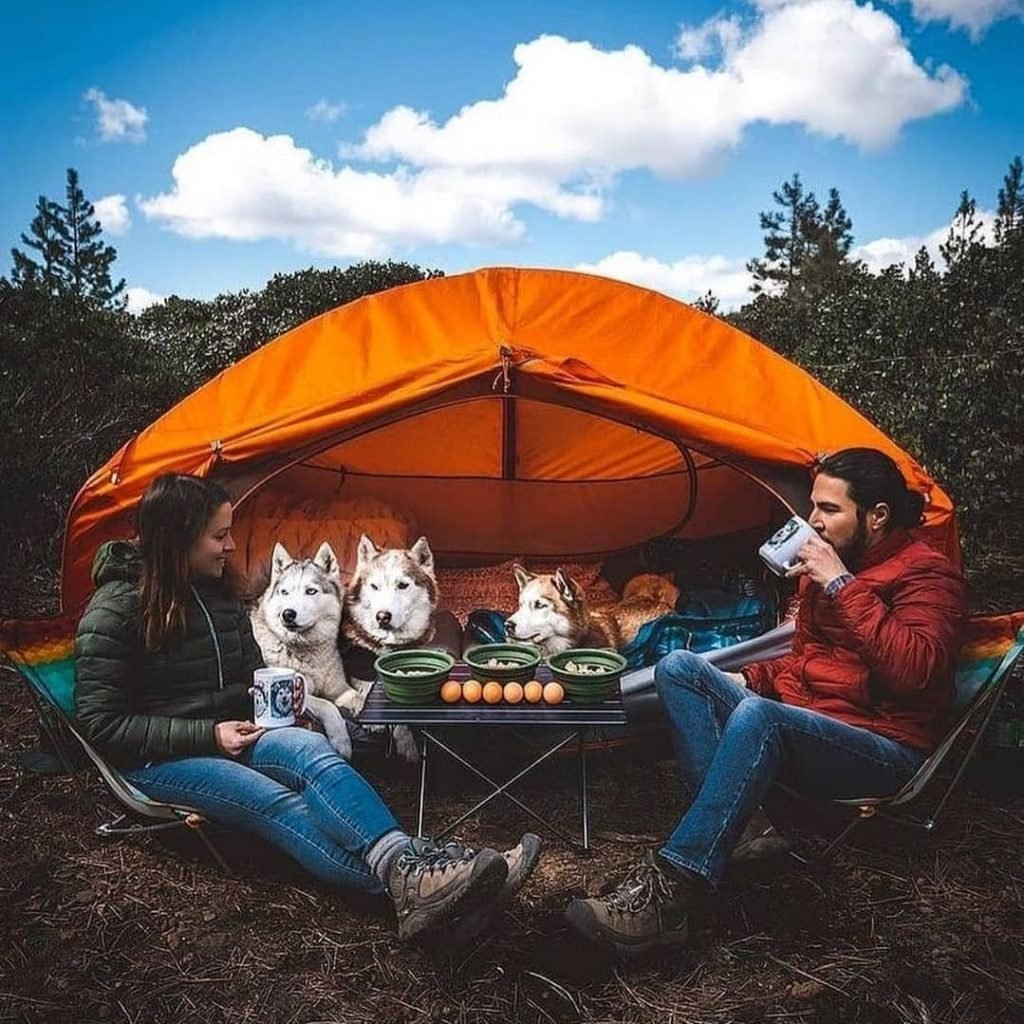
Spending time outdoors is as refreshing for your dog as it is for you. Outdoor activities are proven to be helpful in keeping your pet dog physically and mentally strong and healthy. It also helps to strengthen your bond and friendship.
Then again, you have to be extremely cautious.
As outdoors also possess few risk factors to your four-legged buddy. Although there is no need to worry since with the right gear and right information you can take your dog on a happy and safe camping journey.
First, start with making a list of essentials
Along with basic camp gears, carry everything that is required for your companion-
- Dog food as sharing your food with your pet is not a good idea for your pet’s health.
- Carry a portable dog fence just to make sure your buddy stays in front of your eyes. It is not always right to keep your dog on a leash.
- Separate bowls, one for food and the other for water.
- Enough dog treats.
- Towels to keep your dog dry and a dog brush to keep fur dirt and tangle-free.
- Dog waste bags.
- If he is on any kind of medication do not forget them at home.
- Plenty of Stakes.
- A leash that is comfortable along with an outdoor harness.
- Current photos including special identification marks.
- Prescriptions and medical records.
- A bed for your dog.
- Paw protectants or dog boots are most important.
- Carry all his stuff in a separate bag to avoid unnecessary wastage of time.
Engage in activities with your furry friend
True happiness for your paw friend is in having fun with you-
- Go for hiking: Hiking is a great way to explore your campsite and your fur baby gets enough exercise to feel happy and excited. Keep in mind that it can get tiring so keep enough water and dog treats at hand. Also, while hiking put your dog on a leash so that he does not start running after other animals.
- Play Fetch: Play fetch with your dog. Carry his favorite throw toy or find a stick to play with. It is undoubtedly one of the ways to keep him active and happy.
- Go for a swim: If you have a lake or any water body that is safe for swimming then going for a swim can be really fun. Make sure he loves water otherwise it is not advisable.
Start preparing in advance
Do not procrastinate. You have made up your mind in taking your furry buddy then get done with all the preparations beforehand. Important ones are listed below:
- Train your dog outdoors, take him for long walks, and allow him to interact with strangers.
- Keep his bathroom schedule in your mind and try to make stops around those hours.
- Check your campground rules especially their pet policy and reserve your ground as early as possible.
We have prepared 15 tips to help you and your buddy on your journey. But first, let’s have a look at this cool infographic below:
Table of Contents
Camping With Dogs Infographic

Camping With Dogs: The Ultimate Guide
1. Campground Rules
Not every campground is pet-friendly. The first step in planning a camping trip should be to contact different campground authorities and familiarize yourself with their pet policy and rules.
If you wish to camp with multiple pets, you have to check if the campground you plan for has any such option or obligation. This will help you decide which campground to choose.
Some of your questions may be:
- Necessary dog behavior: If your pet is a bit notorious and doesn’t always reciprocate to your commands, this question becomes more relevant. Most of the campers come to relax and spend some happy time with their pets.For this reason, a pet-friendly campground doesn’t usually allow aggressive or notorious pets. This is purely to keep your pet and others safe.So if you think your pet can act crazy if it is among new people and or is a risk to other dogs, you should leave your dog at home and go camping.
- Leash requirements: Though most campgrounds are pet-friendly, they still mention leash requirements in their regulations and guidelines. This is to make sure that the safety of other campers and their dogs is not compromised.Generally, it is seen that the leash length is not exceeding 6 feet. Some campgrounds may have a few more restrictions, such as retractable or non-retractable leashes.
- Conditions on barking: This one comes with a bit of surprise to us. It is true that all dogs bark. Most of your co-campers and the authorities know this fact. Still, there are some barking ordinances. You may know that some dogs bark even at night.This may disturb the sleep of other campers or could also encourage other dogs to bark. If your dog barks excessively, you need to consider training your dog to be quiet in new surroundings.
2. Your Pet’s Health
Keeping your dog up-to-date on all vaccines is good. This is the standard requirement of most of the campgrounds. This will be checked before entry.
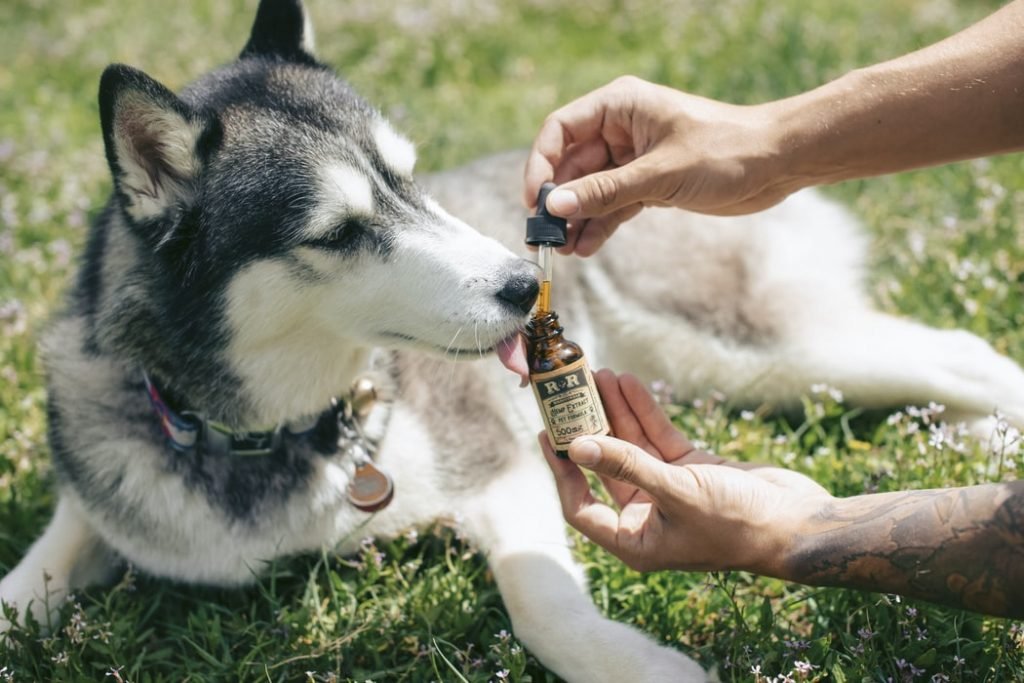
Camping with dogs cannot be a safe idea for those dogs which have chronic illnesses. So take a call only after getting advice from your vet.
Outdoors can be fun, especially when you have your pup accompanying you. But, do not forget that there can be fleas and ticks. So, talking to your vet and taking some flea and tick prevention measures is the best idea.
Grooming your pet before camping may not sound appropriate. Although, if you are camping in a warmer area, then grooming your pet keeps it cool in hot temperatures. Also, trimming your pup’s nails will avoid snagging on anything.
Consider putting some tracking device in your dog’s neck. Just in case if your pup gets loose while camping, then such a device can help you reunite with your camping companion.
3. Upgrade Your Gear
Your camping gear may work fine for you but it may not be suitable for your dog. A quick upgrade can make all the necessary changes.
For instance, if your campground has any swimming area and you plan on swimming with your dog then make sure you grab a leash that floats on water. Floating leashes are intended to give you better control over your dog even in water.
There are dozens of camping equipment that have been redesigned for man and man’s best friend. Some of the items on your camping checklist could be an elevated pet bed for your dog’s comfortable lodge.
Also, make sure to check our buyer’s guide on how to choose the best camping tents for dogs.
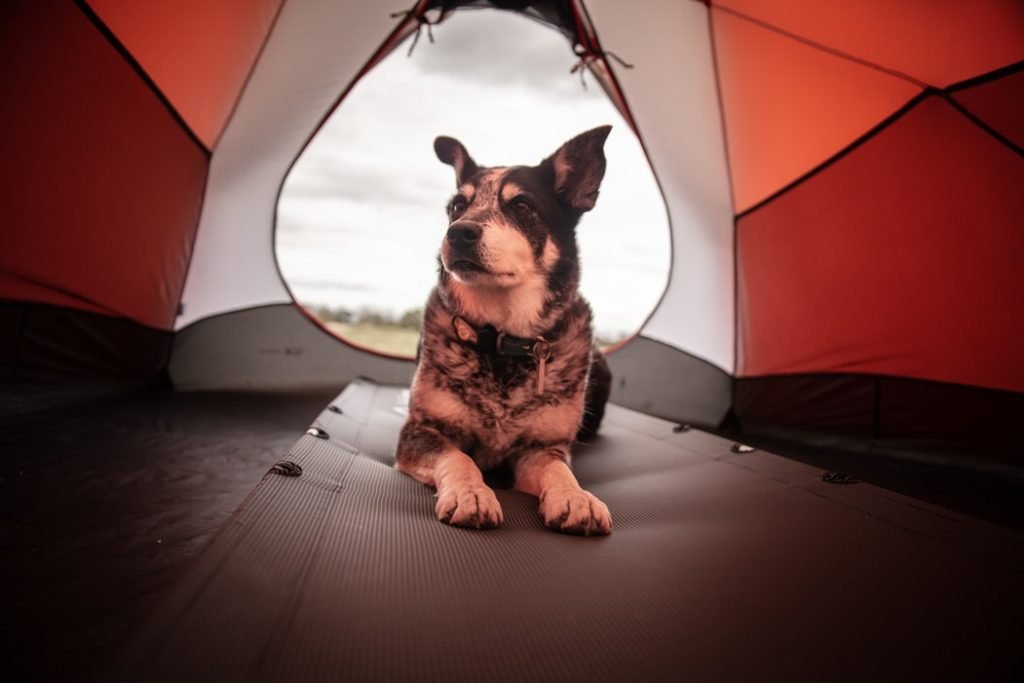
Your dog can also share some of your burden in carrying gear with a lightweight Dog Hiking Pack. Therefore plan your shopping as well.
4. Hydration-check
Camping demands a lot of energy. And when your body is losing energy all you need to you’re your energy back is hydration. It is no different for your dog.
An adult dog uses one ounce of water each day per pound of his body weight. Basing on the size, weight and activity calculate your water requirements. Always make sure your dog is only drinking from his bowl and the water is safe for consumption.
Try to keep the water cool as much as possible.
5. Pre-Plan Dog-Friendly Activities
When you are thinking of camping out with your dog, it is safe to presume that you are also thinking of having fun with your dog.
Therefore, it would make incredible sense to pre-plan fun activities for your dog so that there is little room for improvisation. These activities should be fun for both you and your dog therefore check out some of the events you can take part in together.
Here is a list of fun things you and your canine buddy can do together:
- Visiting the beach.
- Enjoying an outdoor meal.
- Exploring the wilderness.
- Exploring the hiking trail.
- Playing outdoor games like fetch.
- Going boating or kayaking.
Keep in mind that not all such activities are suitable to take part in with your doggy companion. When you are vesting beaches, private trails, or even shopping centers for that matter ensure these destinations are pet approved.
Let’s say you are vesting a national park or a public campground the keep in mind local leash laws and policies about recycling or disposing of dog waste. Pre-plan activities like swimming and hiking. So, that you are prepared for all of it.
Carry towels in case you plan swimming. Carry a collapsible water bowl for hiking.
6. Paw-Care
Preparing your canine friend for the outdoors is as important as preparing yourself. Now there might not be any dog shoes efficient enough to handle the excessive running and jumping common to dogs but you can instead add measures to take good care of your buddy’s paws.

The varying temperatures of the campground can affect your pet paws differently – depending on how bitterly cold or scorching heat.
You need to understand how important it is to take care of your pet’s paws for them to enjoy fun camping activities as much as you.
These are some of the things you need to watch out for:
- Hot pavements
- Cold and wet grounds
- Salt Melting Ice
- Burrs and Sharp Rocks
- Broken Glass and Debris
A few of the measures you can take to protect your dog’s paws:
- Trim the hair between the paw pads of your dog to ensure sticky material doesn’t get stuck between them. Brush and trim them otherwise any debris getting stuck can get hardened causing harm and pain to your dog.
- Make regular paw check-ups. Clean them regularly in-between checks and have any debris or sharp objects removed.
- Massage and moisturize the paws regularly. Schedule special spa dates for your dog.
7. Beware of Wildlife
Your dog interacting with other campers and dogs is not the only thing you need to be worried about when you are out on your camping trip.
Out in the open, there is wildlife and plant life that can cause potential harm to your dog, therefore it is crucial that you are well aware of the surroundings of your campsite when you are engaged in any recreational activity.
Comprehensively, research the animals and plants that have their habitat among the campgrounds you wish to visit. Poisonous plants and insects, snakes, wild cats, or other animals might cause harm to your naïve four-legged friend.
Other elements like stagnant water comprised of green-blue algae. If your drink this it may cause you to become extremely ills is due to water poisoning. In this case, try to invoke regurgitation in your dog.
Research the local plant life as they can harm both you and your dog.
Keep in mind that there still be certain unexpected surprises that nature will have in store so it’s best to learn how to expect the unexpected by training yourself to recognize poisonous plant life, tracking dangerous animal whereabouts, know how to use a map, and keep away from unknown territories.
Check our article on how to repel bears while camping.
8. Watch out for allergens
When in contact with allergens, your dog might start developing symptoms just like human beings. If you encounter symptoms like itching, sneezing, skin infection, or wheezing then limit his outdoor exposure.
Keep him inside the tent and if possible contact your vet. You can avoid high pollen times for camping. Get a better understanding of your dog’s health, weakness, and medical history.
Here are some of your dog’s allergy-related tips and their meaning:
- If you notice that your dog is itching a lot, especially in a localized area or just in general then it could indicate a skin allergy. Other commonly known symptoms of pet allergy would involve respiratory illness or trouble breathing, coughing, sneezing, or wheezing. There can also be noticeable discharge from the eyes or nose. Allergies caused by ingesting something can lead to diarrhea or vomiting in your dog.
- Keep in mind that allergies are common to pets of all breeds and sex. You will notice allergies in your pets once they reach 6 months of age.
- There are dozens of substances that can cause allergies in dogs. Most of the time, these are proteins of insects, plant life, or other animals. Small chemical molecules like mold spores, dust mites, pollen, flea saliva, and dead skin cells can also be the reason for allergies.
9. Bring Toys
I bet he has a favorite toy that he likes to play with all the time. Or, a toy that he treats like his sleep buddy. Do not leave them at home. He might feel more comfortable with them since your campsite is a different place which might lead to homesickness in your dog.
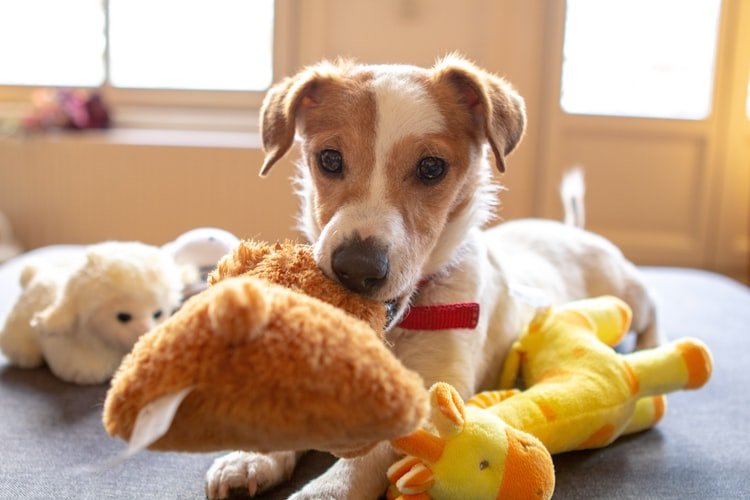
Also, the weather is hard to predict in case it starts raining or you do not get to spend much time outside your tent, then the toys will save his day. So carry outdoor toys, plushies, balls, and rope chews.
10. Keep a picture
We know that you have a phone gallery filled with pictures of your dog. But, make sure you click a picture before you start your camping journey in any unfortunate moments if he separates from you, that picture will help in finding him.
Click the picture in enough natural light and try to keep it clear and regular. If he has any distinct feature, make sure you have captured that as well. Use a bright color collar while taking pictures and carry the same collar to your trip.
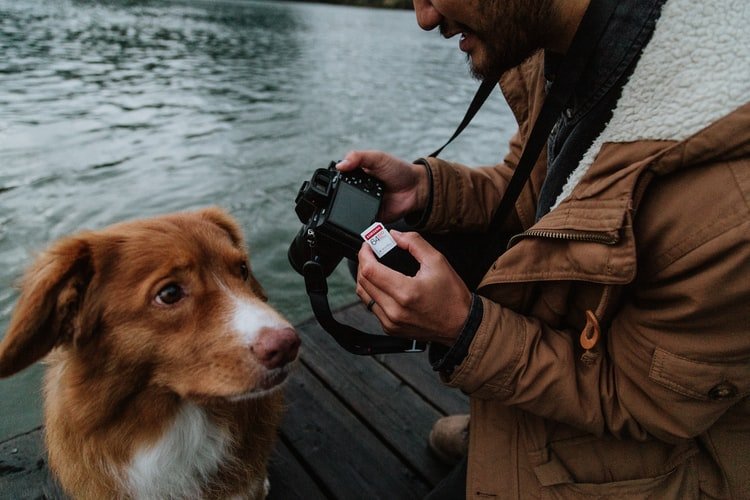
Now, lastly make few photocopies of these significant pictures and keep them with you at your campsite all the time.
11. Never leave your dog unattended
Never leave your dog alone! This sentence deserves to be repeated over and over. Even if he falls asleep in the car or inside the tent or under a shade, leaving him unattended might turn into a nightmare for him.
Even when he is playing with other dogs or kids in the campground, keep a close eye on him. The behavior of other pets or humans is unpredictable at all times and it can lead to unexpected harm to your dog.
During any campsite activity, he can fall sick due to heat or dehydration. So the bottom line is to keep him close and attended throughout the journey.
12. Trial Run
Even with the above-said measures, when you are spending time outdoors and camping with dogs, your pet may feel uncomfortable and trouble you. So, working with your dog in preparing for a camping trip will be helpful.
If your pet is an indoor dog, then you should take it on long walks outdoors in order to acclimatize them to the outdoor environment. Improve your indoor pet’s social skills.
This is very important because, in a pet-friendly campground, there will be many people camping with dogs nearby. Take it on a play date where it comes across other pets and learn to make friends. If you notice that your pet is not comfortable, you can plan how to train it by going camping.
To make your dog learn quickly, set up a camp in your backyard. Spend time thereby behaving in the same way that you would in the campground. Invite your friends and create an environment of social interaction and having fun. See how your dog reacts.
This will help you in assessing your dog’s behavioral improvement.
13. First-Aid Kit
Do not forget to carry a first-aid kit for your pet, especially when planning for off-site activities while traveling. You need to consider your pet as a small child.
Mainly, when they are out in a new environment and they see all the other dogs and people playing or jumping around, there are chances that your pet would get excited and carried away.
This could mean that your pet may forget its safety while having fun, and this can sometimes cause injuries to your little pup.
So consider carrying a first-aid kit for your pet. Some of the essentials are:
- Emergency phone numbers, medical records, and last vaccinations with dates.
- Hydrogen Peroxide. This is not just to clean minor wounds if any. In case your dog consumes any toxic substance, then you should induce vomiting. Vomiting in pets is induced using hydrogen peroxide.
- Scissors, gauze, tape, gloves, etc., may look like unlikely things to add to your luggage. But they all come in handy when you need them, and you don’t have to regret not carrying them.
- Talk to your vet and keep a supply of valuable medications. Do not forget to add an antibiotic ointment to your kit.
- A digital thermometer.
- Carry a collapsible food and water bowl.
14. Dog Safety
Camping with dogs can be fun only when both you and your dog are safe. If your dog has a lot of hair, then there are chances that the dog will get overheated and need to be cooled.
So, do not leave your dog unattended and always carry some water with you.
15. Checking your Dog’s Health:
Here are a few symptoms that you can keep in mind: panting, restlessness, weakness, agitation, breathing becomes heavy, and/or tongue seems bright red.
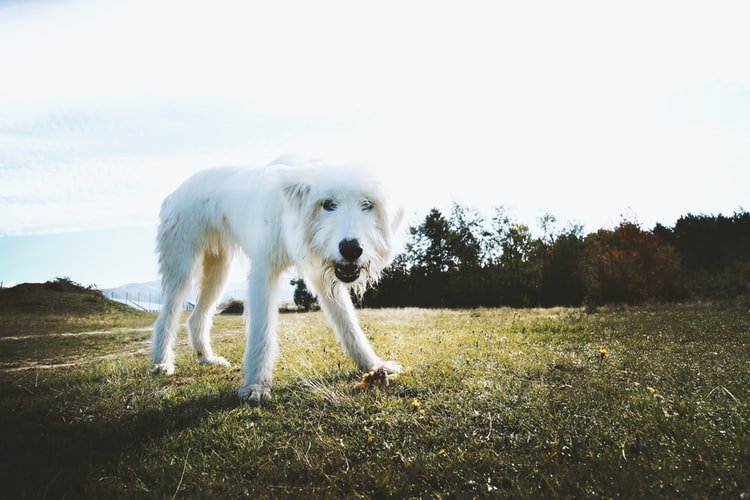
If you notice any of the symptoms mentioned above, check the temperature with the digital thermometer you kept in your first-aid kit. If it reads anything more than 104 or even 104, that means your pet got overheated.
Take it to a cooler location and make it drink some cold water. Keep checking the temperature. If there is no drop, then it is a sign of heatstroke. Without any delay, immediately take your dog to the nearest emergency veterinarian for treatment.
Well, these were the 15 most important aspects which need to be considered while camping with dogs. Remember, safety comes first. So, make sure you keep these points in mind.
We hope that you liked our guide on camping with dogs and we wish you and your canine friend happy camping!
People Also Read:
